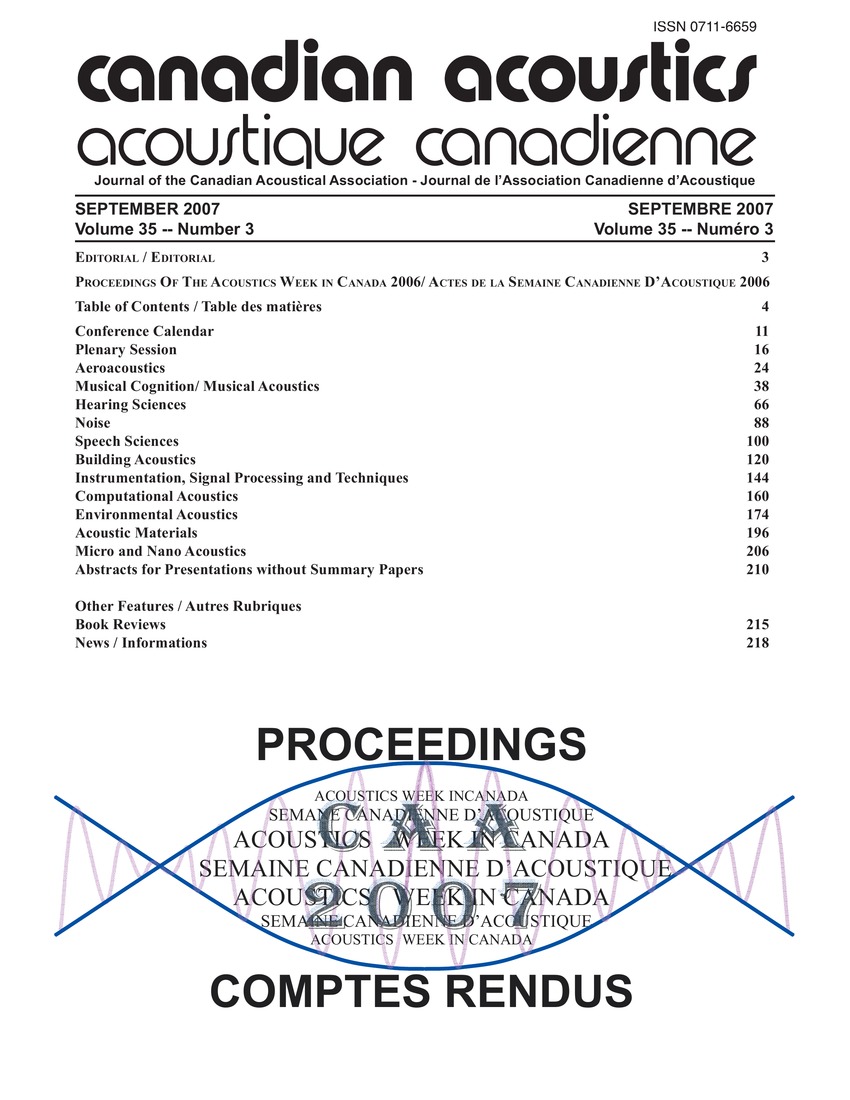Using speech intelligibility scores to rate sound insulation
Keywords:
Digital arithmetic, Sound insulation, Speech synthesis, Airborne sound insulation, Arithmetic average transmission, ISO Weighted Sound Reduction IndexAbstract
Sound insulation ratings have been measured by using speech intelligibility of transmitted speech as speech is a common type of disturbing sound and because speech intelligibility tests can provide accurate subjective ratings. Airborne sound insulation is usually rated in terms of the ISO Weighted Sound Reduction Index (Rw) or the ASTM Sound Transmission Class (STC). Measures in which decibel values are arithmetically averaged over a range of frequencies were all generally quite successful. However, results tended to be less successful, when measures included energy averaging of values at various frequencies. The arithmetic average transmission loss measure AA(200-2.5k) and the Rw measure with the new spectrum weighting term provided very good relationships with mean speech intelligibility scores and are considerable improvements over existing standard measures. The new spectrum weighting is also appealing because it adds to an existing standardized approach.Additional Files
Published
How to Cite
Issue
Section
License
Author Licensing Addendum
This Licensing Addendum ("Addendum") is entered into between the undersigned Author(s) and Canadian Acoustics journal published by the Canadian Acoustical Association (hereinafter referred to as the "Publisher"). The Author(s) and the Publisher agree as follows:
-
Retained Rights: The Author(s) retain(s) the following rights:
- The right to reproduce, distribute, and publicly display the Work on the Author's personal website or the website of the Author's institution.
- The right to use the Work in the Author's teaching activities and presentations.
- The right to include the Work in a compilation for the Author's personal use, not for sale.
-
Grant of License: The Author(s) grant(s) to the Publisher a worldwide exclusive license to publish, reproduce, distribute, and display the Work in Canadian Acoustics and any other formats and media deemed appropriate by the Publisher.
-
Attribution: The Publisher agrees to include proper attribution to the Author(s) in all publications and reproductions of the Work.
-
No Conflict: This Addendum is intended to be in harmony with, and not in conflict with, the terms and conditions of the original agreement entered into between the Author(s) and the Publisher.
-
Copyright Clause: Copyright on articles is held by the Author(s). The corresponding Author has the right to grant on behalf of all Authors and does grant on behalf of all Authors, a worldwide exclusive license to the Publisher and its licensees in perpetuity, in all forms, formats, and media (whether known now or created in the future), including but not limited to the rights to publish, reproduce, distribute, display, store, translate, create adaptations, reprints, include within collections, and create summaries, extracts, and/or abstracts of the Contribution.


